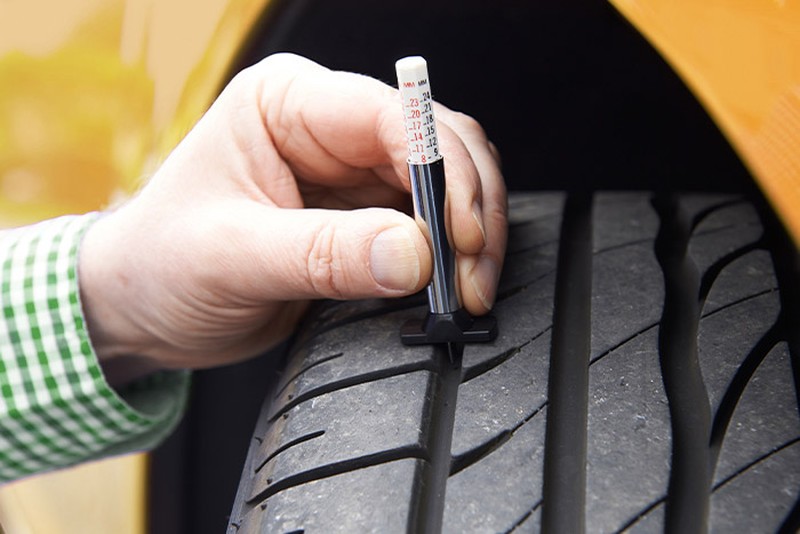The functionality, performance, and safety of a vehicle are fundamentally reliant on the quality of its tires. The depth of the tread is a fundamental factor among the various elements that influence a tire’s performance. In addition to ensuring safe driving conditions, effective management of tire tread depth will contribute to the longevity of your tires. Essential aspects of responsible car ownership encompass recognizing the appropriate timing for tire replacement and comprehending the significance of tread depth.
The Significance of Foot Depth
The vertical distance measured from the apex of the tire’s rubber to the deepest grooves of the tread is known as tread depth. This holds significance for several reasons. Initially, tires exhibiting adequate tread depth offer enhanced traction across diverse terrains, including icy, snowy, or wet road surfaces. The tread’s grooves significantly reduce the likelihood of hydroplaning by effectively channeling water away from the tire. Insufficient tread depth significantly diminishes a tire’s ability to maintain traction on the road, thereby substantially increasing the likelihood of an accident.
What is the amount of tread present in a foot?
The measurement of tire tread depth can be accomplished through a range of techniques. The penny test, which entails placing a coin into the tread with Lincoln’s head facing downward, is a widely recognized method. It is advisable to consider replacing your tires when the tread depth has diminished to the point where the top of Lincoln’s head is visible. A tread depth gauge, providing precise measurements in millimetres, can be employed for enhanced accuracy in assessment. Although the legal minimum tread depth in many regions is set at 1.6mm, it is common for new tires to possess a tread depth ranging from approximately 10 to 12mm.
Indicators of tire degradation
In addition to regularly assessing the tread depth, several indicators suggest that it may be time to consider replacing your tires. Irregular wear patterns on tires may indicate potential alignment issues. It is imperative to have your tires rotated and your wheels aligned should you observe that one side of the tread is experiencing more rapid wear than the other. The auto repair service is equipped to assist you with this matter. Going for the auto repair shop in Oklahoma City, OK would be the best here.
Effects on Fuel Efficiency and Performance
The tread depth of your tires significantly influences both the performance and fuel efficiency of your vehicle. Tires with low tread depth may elevate rolling resistance, potentially placing additional strain on your engine. This may ultimately lead to a decrease in fuel efficiency, which could incur significant costs.
Determining the Appropriate Time for Tire Replacement
Ensuring optimal performance and safety necessitates an understanding of the appropriate timing for tire replacement. It is advisable to replace your tires promptly upon reaching the legal tread depth limit of 1.6mm. Many professionals recommend replacing tires once the tread depth approaches approximately 3 mm, especially during winter or in wet conditions.

